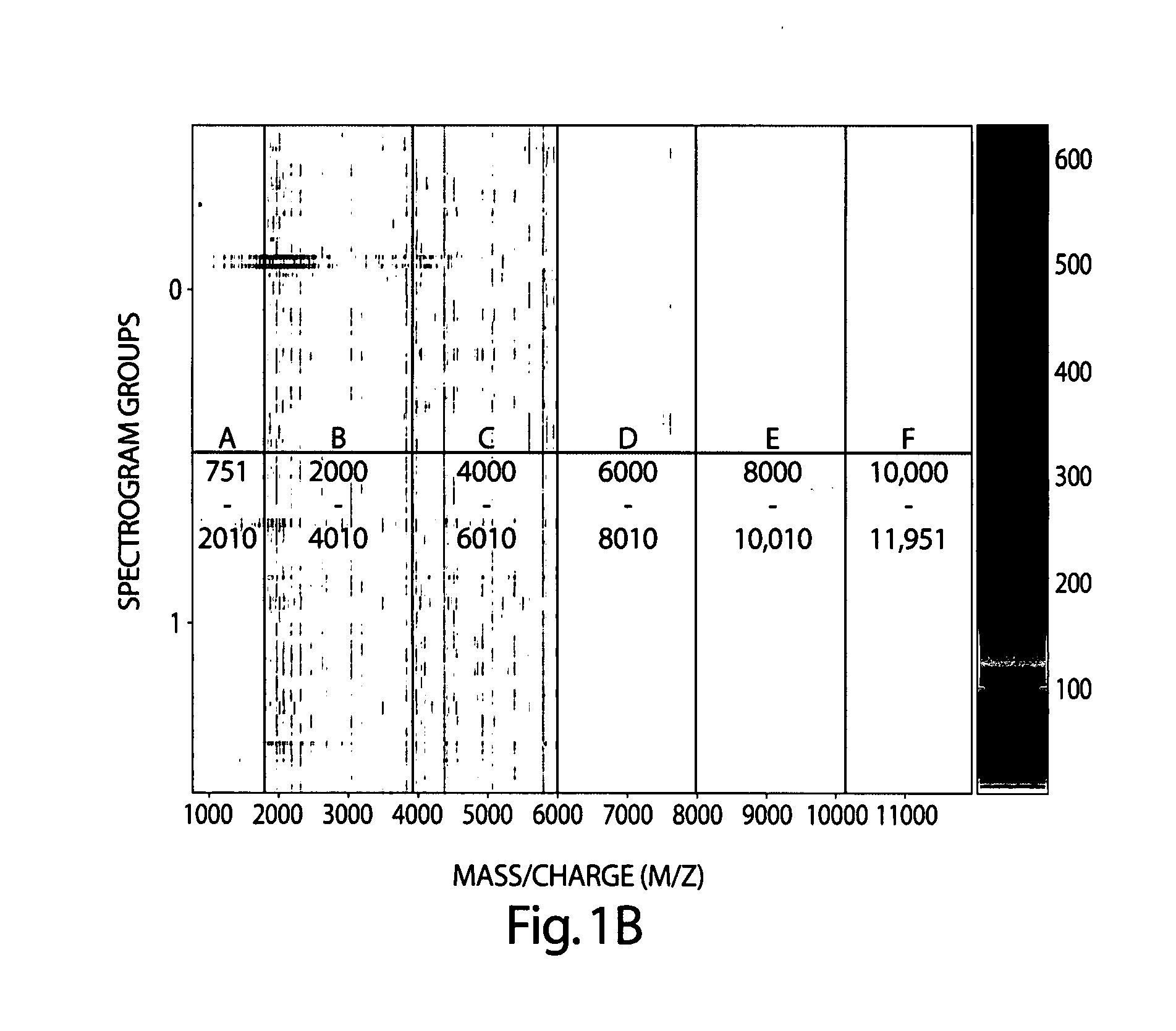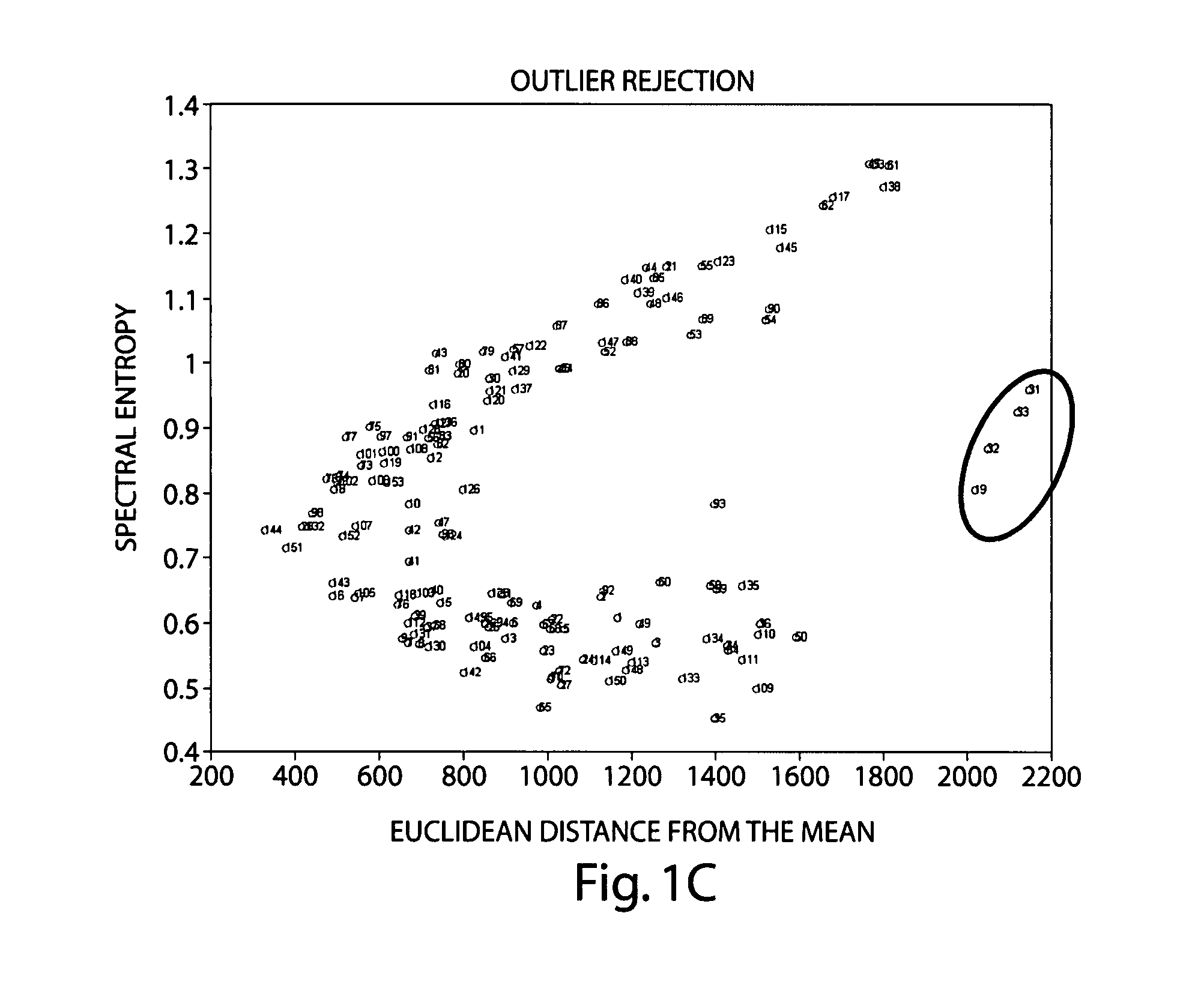Method for Diagnosing a Person Having Sjogren's Syndrome
- Summary
- Abstract
- Description
- Claims
- Application Information
AI Technical Summary
Benefits of technology
Problems solved by technology
Method used
Image
Examples
Embodiment Construction
[0037] A total of twenty seven 27 (14 primary and 13 secondary) Sjögren's Syndrome patients and 27 age-matched healthy controls (non-Sjögren's Syndrome subjects) were recruited for these studies by a collaborative team from The Schepens Eye Research Institute (SERI) and the Tufts University School of Medicine (“SERI / Tufts”). Non-stimulated submandibular glands saliva was collected from the Wharton's duct using a suction device. Two μl of salvia were diluted in 180 μl of 0.2% trifluoroacetic acid and processed for mass spectrometry analyses. Mass spectra were acquired on a prOTOF 2000 matrix-assisted laser desorption / ionization orthogonal time of flight (MALDI-O-TOF) mass spectrometer in the molecular weight range of 750-12,000 Da. Raw data were exported and sent for analysis by Predictive Diagnostics Inc. (PDI, Vacaville, Calif.) who utilized proprietary bioinformatics tools to identify biomarkers.
[0038] Spectra generated by SERI / Tufts were transmitted to PDI via Secure Socket Laye...
PUM
 Login to View More
Login to View More Abstract
Description
Claims
Application Information
 Login to View More
Login to View More - R&D
- Intellectual Property
- Life Sciences
- Materials
- Tech Scout
- Unparalleled Data Quality
- Higher Quality Content
- 60% Fewer Hallucinations
Browse by: Latest US Patents, China's latest patents, Technical Efficacy Thesaurus, Application Domain, Technology Topic, Popular Technical Reports.
© 2025 PatSnap. All rights reserved.Legal|Privacy policy|Modern Slavery Act Transparency Statement|Sitemap|About US| Contact US: help@patsnap.com



